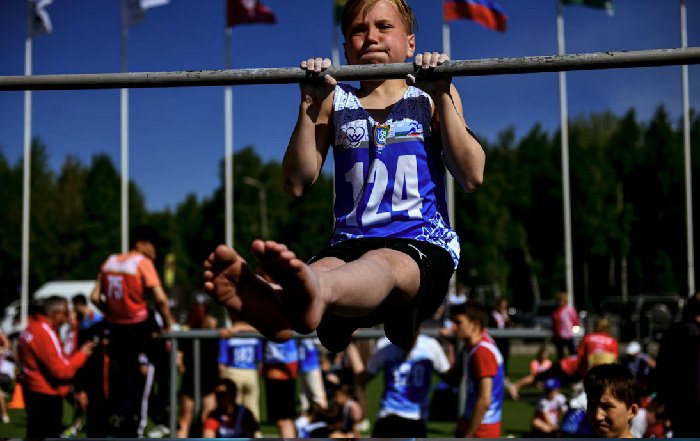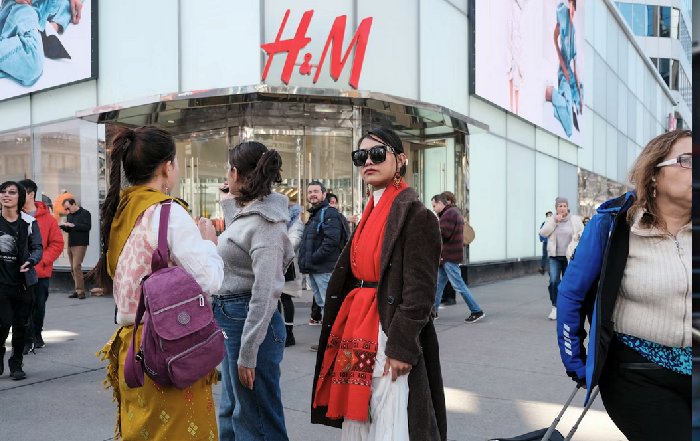Business Success Stories From Around the World: Lessons for 2026 and Beyond
Why Global Success Stories Matter in 2026
In 2026, business leaders, entrepreneurs, and professionals across the world are operating in an environment defined by rapid technological change, heightened geopolitical uncertainty, and a renewed focus on resilience, ethics, and sustainability. Against this backdrop, real-world business success stories from different regions have become more than inspirational anecdotes; they serve as practical blueprints for decision-makers who must balance growth, innovation, and responsibility. For the global audience of xdzee.com, whose interests span business, world affairs, innovation, and lifestyle, understanding how leading organizations in the United States, Europe, Asia, Africa, and the Americas have navigated disruption is essential for building their own strategies, careers, and brands.
Business success in this era is no longer defined solely by financial metrics; it is increasingly evaluated through the lens of Experience, Expertise, Authoritativeness, and Trustworthiness. Companies that thrive are those that combine data-driven decision-making with a deep understanding of their customers, communities, and employees, while also demonstrating integrity in areas such as sustainability, data privacy, and corporate governance. As global institutions like the World Economic Forum emphasize in their discussions on the future of the global economy, leaders must cultivate resilience and agility while still delivering long-term value to stakeholders. Learn more about the evolving global economic landscape on the World Economic Forum website.
Within this context, xdzee.com positions itself as a hub for globally minded readers who want to connect the dots between success stories in sports, adventure, travel, and business, recognizing that high performance, risk management, and strategic thinking are common threads that run through all of these domains. By examining how leading companies and visionary founders have built trust, scaled innovation, and entered new markets, this article offers a comprehensive, globally oriented perspective tailored to professionals and enthusiasts from North America, Europe, Asia, Africa, and beyond.
North American Innovation: Technology, Scale, and Customer Obsession
In North America, particularly in the United States and Canada, some of the most influential business success stories of the last decade have been driven by a combination of digital platforms, data analytics, and relentless customer focus. Companies such as Amazon, Apple, and Microsoft have continued to transform industries from retail and entertainment to cloud computing and enterprise software, while newer players in fintech, healthtech, and clean energy have followed similar playbooks that emphasize scalability and ecosystem thinking. For a deeper understanding of how technology continues to reshape industries, readers can explore insights from McKinsey & Company, which regularly publishes research on digital transformation and productivity.
One of the defining characteristics of North American success stories is their ability to integrate user experience with sophisticated technological infrastructure. Cloud platforms provided by Amazon Web Services, Microsoft Azure, and Google Cloud have enabled startups in cities like San Francisco, Toronto, and Austin to launch globally scalable products with relatively low upfront capital expenditure, a shift that has democratized innovation and opened opportunities for founders from diverse backgrounds. This has also influenced how professionals think about careers and jobs, as skills in software engineering, data science, and product management have become central to both established corporations and high-growth startups.
At the same time, North American companies have had to address growing concerns around data privacy, cybersecurity, and responsible AI, demonstrating that long-term success requires building trust alongside technological prowess. Regulatory developments such as the California Consumer Privacy Act and similar frameworks in Canada and other jurisdictions have forced businesses to rethink how they collect, store, and use data, aligning commercial objectives with ethical considerations. Those interested in the intersection of innovation and regulation can follow developments via Harvard Business Review, which offers detailed analysis on corporate governance and digital ethics.
For xdzee.com readers who track high performance not only in business but also in sports and performance, the North American story underscores how data-driven decision-making, continuous optimization, and a culture of experimentation can deliver outsized results in competitive environments, whether on the trading floor, in the boardroom, or on the playing field.
European Resilience: Sustainability, Regulation, and Purpose-Driven Growth
Across Europe, business success stories in 2026 are increasingly defined by a sophisticated balancing act between profitability, regulation, and societal expectations. Companies in Germany, the United Kingdom, France, the Netherlands, and the Nordic countries have emerged as global leaders in sustainable finance, advanced manufacturing, and green technologies, often operating within some of the world's most stringent regulatory frameworks. Organizations such as Siemens, Unilever, and IKEA have demonstrated that it is possible to integrate environmental, social, and governance principles into core strategy without sacrificing competitiveness. To understand how sustainability is reshaping corporate strategies, readers can review resources from the OECD, which provides in-depth analysis on sustainable growth and policy.
European success stories often highlight the role of long-term thinking and stakeholder capitalism. In Germany, the tradition of the "Mittelstand" has produced thousands of highly specialized, export-oriented firms that dominate niche markets in engineering, automotive components, and industrial technology, combining technical expertise with strong apprenticeship systems and deep community roots. In the United Kingdom and France, financial centers such as London and Paris have become hubs for green bonds and sustainable investment products, aligning capital markets with climate goals and social priorities. Those interested in sustainable finance can explore further through the UN Environment Programme Finance Initiative, which showcases global best practices in responsible investment.
At the same time, European companies have navigated significant volatility, from Brexit and shifting trade dynamics to energy price shocks and geopolitical tensions. These challenges have reinforced the importance of operational resilience, supply chain diversification, and scenario planning, themes that resonate strongly with xdzee.com readers who follow world news and business developments. The European Union's regulatory initiatives, such as the Corporate Sustainability Reporting Directive and the Digital Markets Act, have also pushed companies to enhance transparency and accountability, setting benchmarks that influence corporate behavior worldwide. Those seeking detailed information on these regulatory changes can consult the European Commission website.
For professionals and entrepreneurs in Europe and beyond, these success stories underscore that building a resilient, future-ready business increasingly requires integrating sustainability into product design, supply chains, and brand positioning. This approach aligns closely with the editorial focus of xdzee.com, which emphasizes ethics, culture, and innovation as critical dimensions of long-term performance.
Asian Dynamism: Scale, Digital Ecosystems, and New Consumer Classes
In Asia, particularly in China, India, South Korea, Japan, Singapore, and Southeast Asia, business success stories in 2026 are shaped by rapid urbanization, rising middle classes, and the proliferation of mobile-first digital ecosystems. Companies such as Alibaba, Tencent, Samsung, Toyota, and Grab have built platforms that connect hundreds of millions of users across e-commerce, payments, entertainment, mobility, and logistics, illustrating how integrated digital services can become deeply embedded in everyday life. To explore how digital platforms are reshaping Asia's economies, readers can refer to analysis from the Asian Development Bank, which examines regional growth trends and innovation.
China's technology giants have pioneered super-app models that combine messaging, payments, shopping, and services in a single interface, influencing business strategies from Bangkok to Berlin. Meanwhile, India's digital public infrastructure, including the Unified Payments Interface and Aadhaar, has enabled a wave of fintech and e-commerce startups that are expanding beyond domestic markets into the Middle East, Africa, and Europe. This has created new opportunities for cross-border collaboration and investment, as well as for professionals seeking dynamic jobs in product development, cybersecurity, and cross-cultural marketing. For those tracking digital financial inclusion, the World Bank provides comprehensive data and case studies.
In North Asia, companies in Japan and South Korea have continued to excel in advanced manufacturing, semiconductors, and consumer electronics, while also investing heavily in electric vehicles, robotics, and renewable energy. Samsung Electronics, TSMC, and Sony exemplify how sustained investment in research and development, combined with disciplined manufacturing excellence, can secure global leadership in high-tech industries. As supply chain resilience has become a strategic priority, these firms have played pivotal roles in reshaping global production networks. Readers can learn more about global supply chain trends through the World Trade Organization, which provides regular reports and statistics.
For xdzee.com audiences who are passionate about travel, adventure, and destination experiences, Asia's business transformation has also redefined tourism, hospitality, and lifestyle sectors. Innovative hospitality brands in Thailand, Singapore, and Japan are blending digital convenience with cultural authenticity, offering personalized experiences that appeal to international travelers from Europe, North America, and the rest of Asia. This convergence of technology, culture, and service design demonstrates how business success in the region is increasingly tied to understanding and elevating the customer experience.
African and Middle Eastern Momentum: Leapfrogging and Entrepreneurial Energy
Across Africa and the Middle East, a new generation of entrepreneurs and companies is reshaping global perceptions of emerging markets, leveraging mobile technology, fintech, and renewable energy to address longstanding structural challenges. In countries such as Kenya, Nigeria, South Africa, Egypt, and the United Arab Emirates, success stories highlight how businesses can "leapfrog" traditional infrastructure constraints by adopting innovative models that prioritize accessibility, affordability, and inclusion. The story of mobile money platforms in East Africa, inspired by pioneers like M-Pesa, remains one of the most cited examples of how technology can transform financial access for millions. For a broader perspective on African economic transformation, readers can consult reports from the African Development Bank.
In Nigeria and Kenya, fintech startups are building on this foundation to offer credit, insurance, and investment products tailored to small businesses and informal workers, while logistics and e-commerce platforms are connecting local producers with regional and global markets. These ventures are not only creating new jobs but also fostering ecosystems that attract international venture capital and strategic partnerships with global technology firms. In South Africa, companies in renewable energy and agritech are demonstrating how innovation can address energy shortages and food security, aligning commercial success with national development goals. Those interested in sustainable development trends can learn more through the United Nations Development Programme.
In the Middle East, particularly in the Gulf region, countries such as the United Arab Emirates and Saudi Arabia are investing heavily in diversification strategies that reduce reliance on hydrocarbons and position cities like Dubai, Abu Dhabi, and Riyadh as hubs for tourism, logistics, finance, and clean energy. Large-scale projects in renewable energy, smart cities, and cultural tourism illustrate how state-backed investment, public-private partnerships, and global branding can converge to create new engines of growth. Organizations such as Emirates, Saudi Aramco, and emerging regional tech champions are increasingly visible on the global stage, reinforcing the region's role in shaping energy, trade, and travel flows. For data on energy transitions and climate policies, readers can visit the International Energy Agency.
For the xdzee.com community, which closely follows news, world developments, and evolving brands, these African and Middle Eastern success stories demonstrate how entrepreneurial drive, supportive policy environments, and digital infrastructure can redefine a region's narrative, moving from dependency and volatility toward innovation and resilience.
Latin American and South American Reinvention: Digital Platforms and Regional Integration
In Latin America and South America, business success stories in 2026 are increasingly associated with the rise of regional digital platforms, renewed focus on macroeconomic stability, and strategic use of natural resources to support sustainable growth. Countries such as Brazil, Mexico, Colombia, and Chile have produced high-growth companies in e-commerce, fintech, and mobility, which have not only captured domestic markets but also expanded across borders. Mercado Libre, often described as Latin America's answer to global e-commerce giants, has built a powerful ecosystem that combines online marketplaces, payments, logistics, and credit, illustrating how regional players can compete effectively against global incumbents. Those seeking deeper analysis of Latin America's economic trajectory can review materials from the Inter-American Development Bank.
Fintech companies in Brazil and Mexico have capitalized on low banking penetration and widespread smartphone adoption to provide digital accounts, instant payments, and lending services to millions of consumers and small enterprises, while ride-hailing and delivery platforms have created flexible earning opportunities for workers navigating volatile labor markets. These developments are particularly relevant for xdzee.com readers who are interested in the interplay between business, jobs, and lifestyle, as they illustrate how digital platforms can reshape work, consumption, and urban mobility.
At the same time, Latin American success stories must be viewed in the context of recurring challenges such as inflation, political instability, and inequality. Companies that have thrived in this environment typically exhibit strong risk management capabilities, diversified revenue streams, and the ability to adapt quickly to changing regulatory and macroeconomic conditions. For professionals and investors, this underscores the importance of combining local insight with rigorous scenario planning. Those interested in regional political and economic analysis can explore resources from Chatham House, which offers independent commentary on global affairs.
The region's abundant natural resources, including critical minerals, agricultural products, and renewable energy potential, also play a central role in success stories related to green industrialization and sustainable exports. As global demand for low-carbon technologies grows, Latin American countries are increasingly positioning themselves as key suppliers in value chains for electric vehicles, batteries, and sustainable agriculture, aligning local development with global climate goals. Readers can learn more about sustainable business practices and climate-related risks through the Task Force on Climate-related Financial Disclosures, which provides guidance for companies and investors.
Lessons in Leadership, Culture, and Ethics Across Regions
While the specific details of success stories vary by region, sector, and company, certain themes consistently emerge as decisive factors in building organizations that can thrive in 2026 and beyond. For the global audience of xdzee.com, these themes are closely aligned with editorial pillars such as ethics, culture, performance, and safety, making them particularly relevant for professionals, entrepreneurs, and enthusiasts seeking to translate global lessons into their own contexts.
One of the most important lessons is the centrality of organizational culture to long-term success. Companies that have weathered crises, adapted to digital disruption, and maintained customer trust tend to have cultures that encourage transparency, continuous learning, and constructive challenge. They invest in leadership development, prioritize psychological safety, and create mechanisms for employees at all levels to contribute ideas and feedback. For those interested in the science of high-performing teams and leadership, the MIT Sloan Management Review offers research-backed insights that complement the case-based narratives often highlighted on xdzee.com.
Ethical conduct and corporate responsibility have also moved from the periphery to the core of business strategy. In an era where social media can amplify misconduct within hours and regulators in Europe, North America, and Asia are increasingly focused on antitrust, data protection, and environmental compliance, companies that neglect ethics face not only reputational damage but also significant legal and financial risk. Successful organizations are therefore integrating ethics into decision-making processes, supply chain oversight, and product design, treating it as a driver of trust and differentiation rather than a compliance afterthought. To explore frameworks for responsible business, readers can consult the UN Global Compact, which provides principles and case studies on corporate sustainability.
Another recurring theme is the importance of resilience and risk management. From pandemic-related disruptions to geopolitical conflicts and climate-related disasters, the last several years have underscored that volatility is not an exception but a structural feature of the global business environment. Organizations that have emerged stronger from these shocks typically maintain diversified supply chains, robust business continuity plans, and flexible operating models that allow for rapid reallocation of resources. They also invest in scenario analysis and stress testing, drawing on data and expert insight to anticipate potential disruptions. For a structured approach to risk and resilience, the Institute of Risk Management offers professional guidance and educational resources.
For xdzee.com, which connects themes across sports, adventure, travel, and business, these lessons highlight that success in any high-stakes arena requires a blend of strategy, discipline, adaptability, and integrity. Whether the context is a global brand navigating regulatory change or an athlete preparing for a major competition, the underlying principles of preparation, mindset, and ethical conduct remain strikingly similar.
The Role of Experience, Expertise, and Trust in a Connected World
In an increasingly interconnected global economy, where news travels instantly and customers can compare products, prices, and corporate behavior across borders, Experience, Expertise, Authoritativeness, and Trustworthiness are becoming decisive differentiators. Organizations that succeed in 2026 are those that not only deliver excellent products and services but also communicate their competence and values clearly to stakeholders, from customers and employees to regulators and investors. This is particularly relevant for a global platform like xdzee.com, which serves readers in the United States, the United Kingdom, Germany, Canada, Australia, France, Italy, Spain, the Netherlands, Switzerland, China, Sweden, Norway, Singapore, Denmark, South Korea, Japan, Thailand, Finland, South Africa, Brazil, Malaysia, New Zealand, and beyond.
Experience is reflected in a company's track record of execution, its ability to learn from past successes and failures, and its willingness to iterate in response to changing conditions. Expertise is demonstrated through technical proficiency, domain knowledge, and the capacity to solve complex problems in areas such as artificial intelligence, renewable energy, logistics, or financial services. Authoritativeness emerges when organizations contribute to industry standards, participate in policy dialogues, and publish thought leadership that shapes how others think about key issues. Trustworthiness, perhaps the most intangible yet critical quality, is built over time through consistent behavior, transparent communication, and alignment between stated values and real-world actions.
For readers of xdzee.com, who frequently navigate decisions about careers, investments, travel, and lifestyle in a volatile world, these attributes are essential markers when evaluating companies, brands, and even destinations. Whether choosing a financial services provider in London, a technology employer in Berlin, a mobility platform in Singapore, or an adventure tourism operator in New Zealand, the ability to assess Experience, Expertise, Authoritativeness, and Trustworthiness can significantly influence outcomes. In this sense, success stories from around the world are not merely narratives of growth and innovation; they are also case studies in how organizations earn and sustain trust in a global marketplace.
As 2026 unfolds, xdzee.com will continue to explore and interpret these stories across business, world, brands, innovation, and beyond, offering its audience a curated, globally informed perspective that connects high performance with ethics, culture, and human experience. In doing so, it reflects the reality that business success is no longer confined to balance sheets and stock prices; it is ultimately measured by the lasting value organizations create for people, communities, and the planet.








